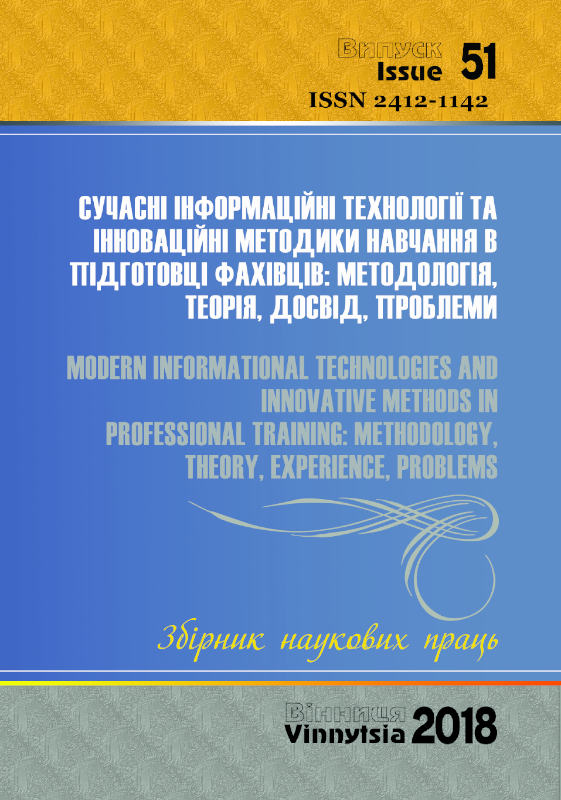POSSIBILITIES OF USING BINOCULAR VIDEO GLASSES WITH AUGMENTED REALITY DURING TIME STUDY OF VARIOUS DISCIPLINES BY COLLEGE STUDENTS
Keywords:
technology, virtual and augmented reality, binocular video glasses, software, virtualization, simulators of virtual reality, optimization, classesAbstract
The article discusses the use of technology of virtual and augmented reality at classes at college.
The application of this technology is shown on the example of the use of binocular video glasses with the available
virtual and augmented reality. The main ideas of using this technology on examples of certain subjects are considered
and the main software tools that can be used during different types of classes are described. The main advantages and
disadvantages of using such innovative technology are analyzed.
The authors describe the importance and urgency of virtualization of reality as this kind of technology
generates a sense of comfort in classrooms for students and teachers. And, in addition, it is an important tool for
optimizing reality. It should be noted that the use of different types of virtual reality software or simulators of the same
type harmoniously complements and enriches any kind of activity with novelty and curiosity for students. And it also
makes it easier for the teacher to explain and demonstrate rather difficult topics that require visualization.
Downloads
References
Шишкіна М. П. Тенденції розвитку та використання інформаційних технологій у контексті формування
освітнього середовища / М. П. Шишкіна // Засоби і технології єдиного інформаційного освітнього простору:
зб. наук. праць [За ред. В. Ю. Бикова, Ю. О. Жука] / Інститут засобів навчання АПН України. – Київ: Атіка, 2004.
– С.81–88.
Кастельс М. Информационная эпоха: экономика, общество и культура / М. Кастельс. – Москва : ГУ ВШЭ, 2000. – 608 с.
Носов Н. А. Словарь виртуальных терминов / Н. А. Носов // Труды лаборатории виртуалистики. – Вып. 7, Труды Центра профориентации. – Москва: Путь, 2000. – 69 с.
Польська Т. Д. Філософські аспекти віртуальної реальності й феномен «невидимості» (invisibility) медіа /
Польська Т. Д // [Електронний ресурс] режим доступу: http://www.apfs.in.ua/v8_2015/32.pdf
Грицан П.А.Україна: перспективи і сучасне використання технології доповненої реальності: Міжвуз. зб.:
Комп’ютерно-інтегровані технології: освіта, наука, виробництво / Грицан П.А. – Луцьк, 2011.
Кириленко К.М. Культура і наука: підручник для студентів вищих навчальних закладів / К.М. Кириленко. – Київ: ТОВ Агентство Україна, 2015. – 400 с.
Кріс Коло Віртуальна реальність: наступне покоління освіти, навчання та навчання / Кріс Коло // [Електронний ресурс] режим доступу: https://www.forbes.com/sites/forbesagencycouncil/2017/12/13/virtual-rea lity-the-next-generation-of-education-learning-and-training/#42bded3 2733f
Downloads
Published
Issue
Section
License
Copyright (c) 2018 А. М. Вітюк, Т. В. Куленко

This work is licensed under a Creative Commons Attribution 4.0 International License.

